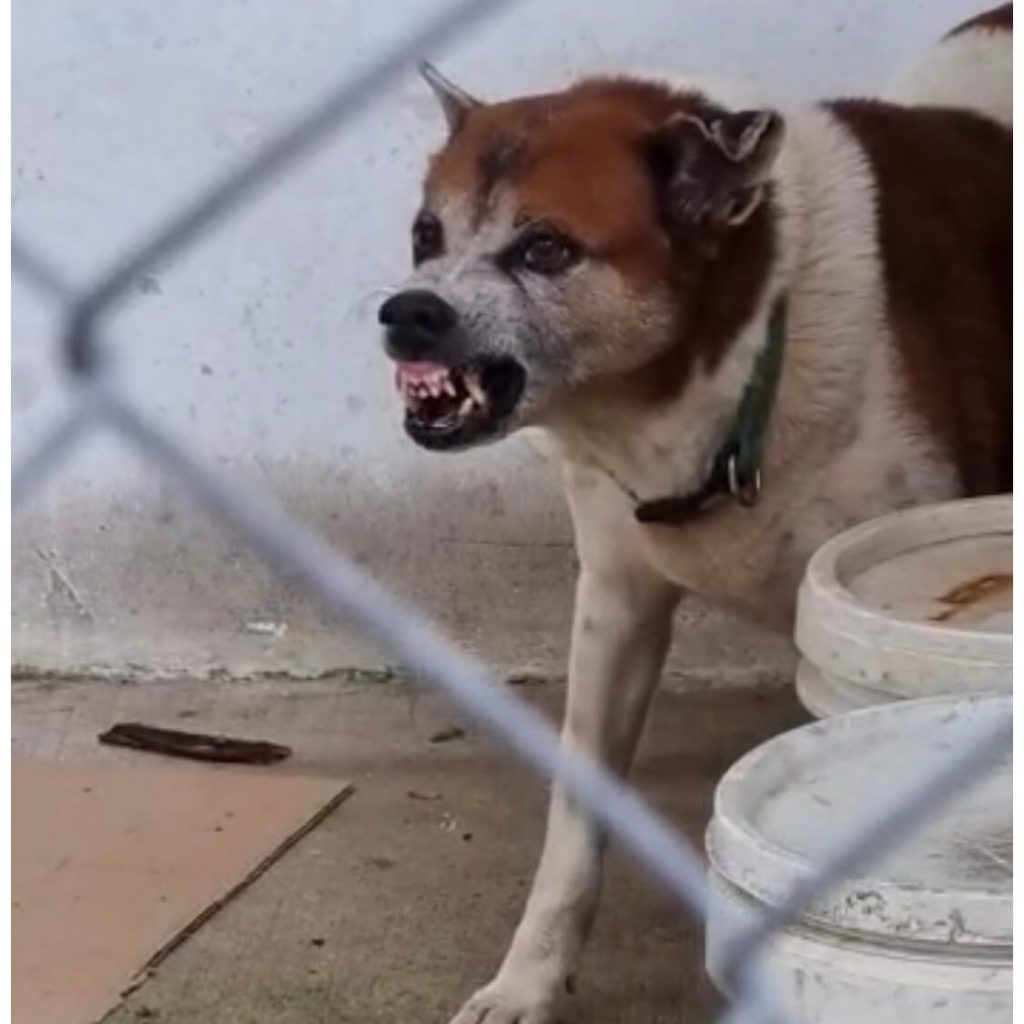Chaining dogs is a common practice where a dog is confined with a tether secured to a stationary object, such as a dog house or a stake in the ground (Earth & Animal Advocates, 2023). Confining dogs, on the other hand, is the action of exposing dogs to reduced social contact and limited space (Polgár et al., 2019). Domestic dogs, in particular, are often confined to cages when owners go on holiday or when dogs receive veterinary care (Polgár et al., 2019). People believe that such practices can control a dog and keep them safe. However, chaining or confining a dog can lead to detrimental effects on its mental health and well-being. Therefore, we seek to understand how chaining a dog can lead to isolation, mental stress, and social exclusion.
Dogs are social creatures that thrive on social interactions. Research has shown that mammals (e.g. dogs) need social bonds for their well-being and survival. Not just between humans, dogs need social interaction between other dogs and humans to prevent a deficiency in quality social relationships (Hawkley et al., 2012). Humans have an impact on the behaviour and welfare of animals. As seen in the Five Domains Model for animal welfare assessment, “mental state” is one of the key domains. External circumstances such as being chained or confined can lead them to feel anger, loneliness, boredom, anxiety, and even fear (Mellor et al., 2020). When fearful, dogs may exhibit passive and/or active behaviours such as avoidance, hypervigilance, pacing, or excessive activity (Frank, 2014). During times of anxiety or fear, most mammals typically exhibit low, cowering body postures, attempts to retreat, and avoidance of stimuli that induce fear (Stephen & Ledger, 2005). Social isolation from others is one of the most potent and reliable stress stimuli for dogs (Cacioppo et al., 2014). Chaining a dog prevents them from running around freely. Consequently, they become aggressive and stressed due to an isolated life. Dogs who can socialise with humans and other dogs, on the other hand, are less of a threat and are more carefree.


Confining a dog in a small and enclosed space (e.g. a crate, cage, or small room) also results in confinement stress (Ballantyne, 2018). This term describes a situation where dogs show signs of anxiety, fear or panic when left in an enclosed space for a long period, with or without their owners (Stevens, 2004). When dogs panic during confinement, they may display intense escape behaviours, bend metal crates or chew on plastic crates excessively (Ballantyne, 2018). Therefore, owners may increase their efforts to confine their dogs even more, to prevent such behaviour in the future. However, owners fail to notice that these behaviours are a result of extreme stress caused by confinement, and in the worst-case scenario, dogs may suffer from self-trauma or potentially death (Ballantyne, 2018). Such feelings may even lead to separation anxiety and noise phobias. Since these dogs have suffered from being kept in confined spaces, they may be fearful of even visiting the veterinarian or groomer.
A dog should therefore not be kept in confined spaces unless they are comfortable with it. Dog owners can play a part in ensuring that dogs are not isolated and have low levels of mental stress. They should pay immediate attention to their dogs if they notice that they are exhibiting physiologic signs such as salivating, tense muscles, and dilated pupils (Ballantyne, 2018). Establishing a safe, comfortable, and secure area for them should be the top priority for all dog owners to reduce unnecessary stress on them (Sherman & Mills, 2008).
References:
Ballantyne, K. C. (2018). Separation, Confinement, or Noises. Veterinary Clinics of North America: Small Animal Practice, 48(3), 367–386. https://doi.org/10.1016/j.cvsm.2017.12.005
Cacioppo, S., Capitanio, J. P., & Cacioppo, J. T. (2014). Toward a neurology of loneliness. Psychological Bulletin, 140(6), 1464–1504. https://doi.org/10.1037/a0037618
Earth & Animal Advocates. (2023, February 6). Chained Dogs. Www.earthandanimals.com. https://www.adoptananimalkits.com/advocate/companion-animals/params/post/1281050/chained-dogs&sa=D&source=docs&ust=1678536261922866&usg=AOvVaw05s-HCXg09RJfHXRLtsDU6
Frank, D. (2014). Recognizing Behavioral Signs of Pain and Disease. Veterinary Clinics of North America: Small Animal Practice, 44(3), 507–524. https://doi.org/10.1016/j.cvsm.2014.01.002
Hawkley, L. C., Cole, S. W., Capitanio, J. P., Norman, G. J., & Cacioppo, J. T. (2012). Effects of social isolation on glucocorticoid regulation in social mammals. Hormones and Behavior, 62(3), 314–323. https://doi.org/10.1016/j.yhbeh.2012.05.011
Mellor, D. J., Beausoleil, N. J., Littlewood, K. E., McLean, A. N., McGreevy, P. D., Jones, B., & Wilkins, C. (2020). The 2020 Five Domains Model: Including Human–Animal Interactions in Assessments of Animal Welfare. Animals, 10(10), 1870. https://doi.org/10.3390/ani10101870
Polgár, Z., Blackwell, E. J., & Rooney, N. J. (2019). Assessing the welfare of kennelled dogs—A review of animal-based measures. Applied Animal Behaviour Science, 213, 1–13. https://doi.org/10.1016/j.applanim.2019.02.013
Sherman, B. L., & Mills, D. S. (2008). Canine Anxieties and Phobias: An Update on Separation Anxiety and Noise Aversions. Veterinary Clinics of North America: Small Animal Practice, 38(5), 1081–1106. https://doi.org/10.1016/j.cvsm.2008.04.012
Stephen, J. M., & Ledger, R. A. (2005). An Audit of Behavioral Indicators of Poor Welfare in Kenneled Dogs in the United Kingdom. Journal of Applied Animal Welfare Science, 8(2), 79–95. https://doi.org/10.1207/s15327604jaws0802_1
Stevens, S. (2004). Handbook of Behavior Problems of the Dog and Cat, Second Edition Gary Landsberg, Wayne Hunthausen, Lowell Ackerman. Saunders. List Price: $69.95 (If you are a VIN member, $62.96 in the VIN bookstore. Journal of Feline Medicine and Surgery, 6(1), iii–iii. https://doi.org/10.1016/s1098-612x(04)00036-1



